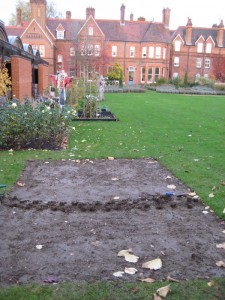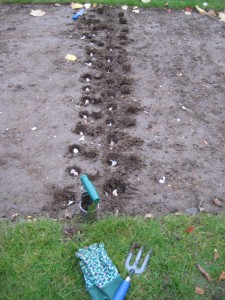Planting Performance (3) 22/04/2010 took place on a bright, warm, sunny day, with not an April shower in sight. Tiny companion-planting seedlings were delicately transplanted from their pots in the fixed up greenhouse to the Allotment Plot at MERL. Pot Marigold, Cosmos and Sweetpea arrived at their outdoor growing location. Small holes were dug and each plant was placed there in, their roots covered with soil and the soil lightly pressed. A bell was rung to signify the connection of each plant to the earth-growing site, announcing the rooting.
Sticks were sought in the wooded area up the slope at the back of the garden. An attempt was made for the sticks to be stuck in to the hard ground. The ground resisted stick penetration. A watering can was brought from the shed, filled and then emptied over the Allotment Plot. The watering can again was filled and again emptied onto the Plot. The earth absorbed the water. The hard ground softened under the effect of the water absorption, allowing enough stick to enter the earth and to accommodate the sticks into an upright position that will assist in the Sweetpeas and the Peas growth. The tendrils of these plants will reach out and search for supporting objects that they can grip to as they grow.
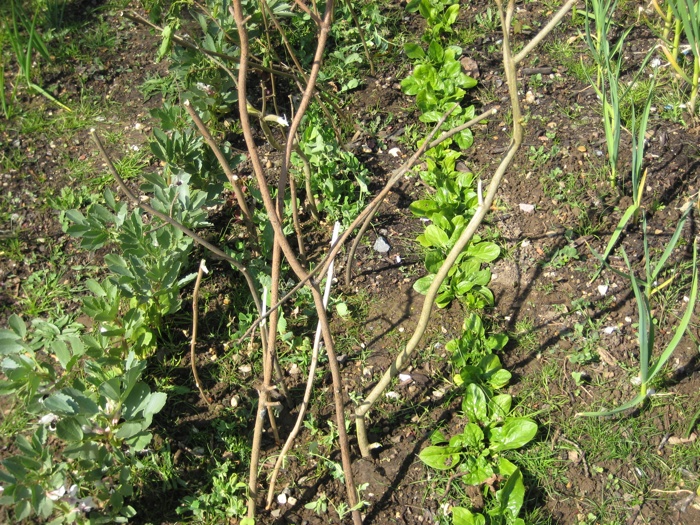
Next the action of weeding the Plot was performed. Weeds can be the unwanted cohabiters of an Allotment Plot, but they also can be desirable depending what they are (for more information about weeds and organic growing see here). As the seeds that have been planted germinate and grow so also do the weeds. Weeding or the removal of weeds is an ongoing maintenance pursuit. When the desired germinated vegetable seeds are in their tender early stages of seedling growth, weed removal can be a delicate operation and needs to avoid the disturbance of the planted seedlings.
Pea and bean weevils (Sitonia Lineatus) have been eating curved portions from the edge of the legumes leaves scalloping their edges. Bees in the process of nectar gathering and pollination are visiting the Broadbean flowers.
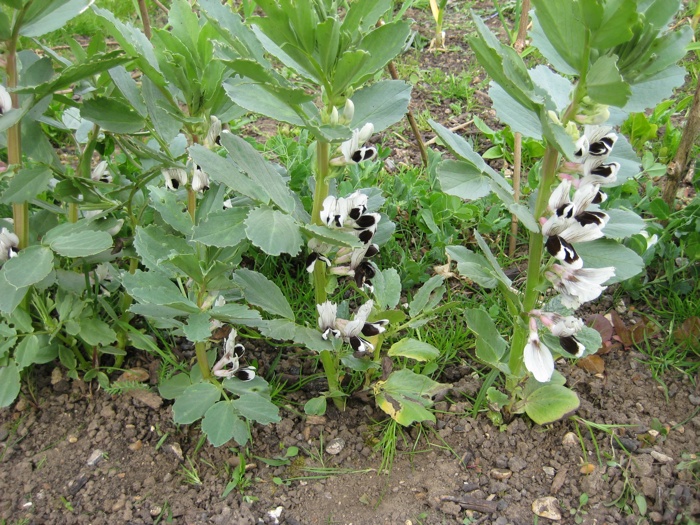
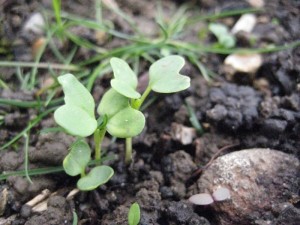
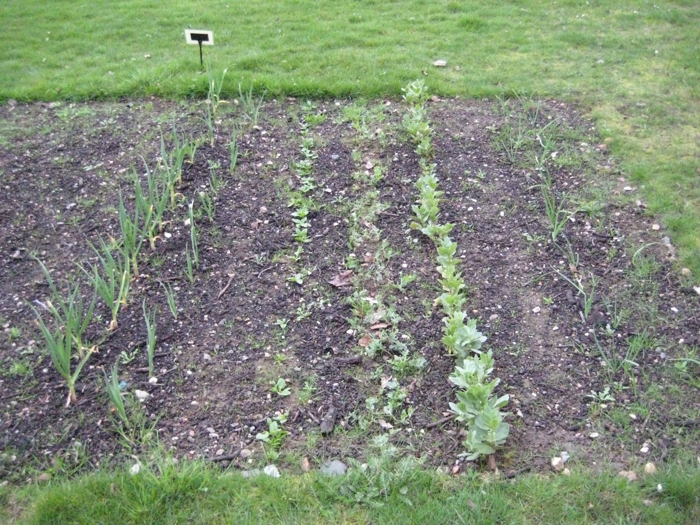
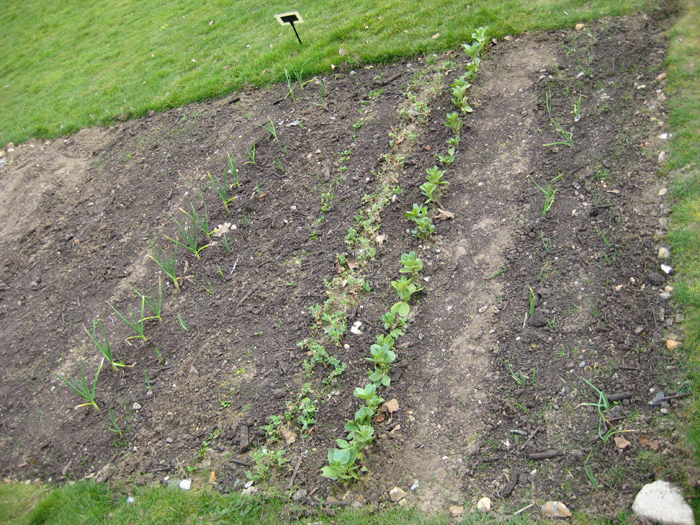
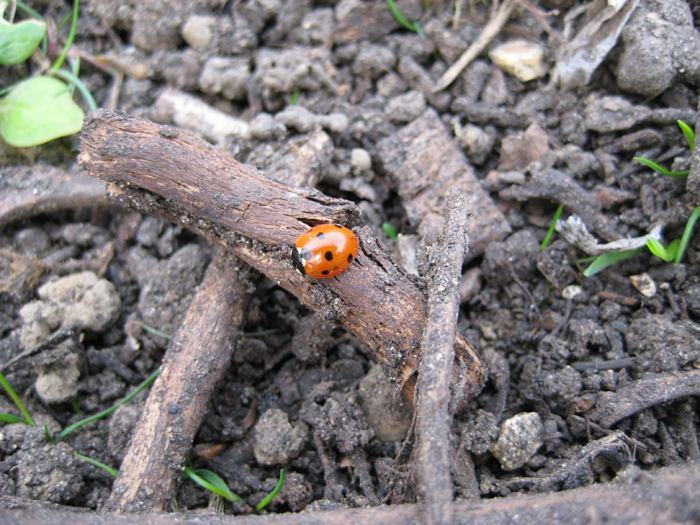

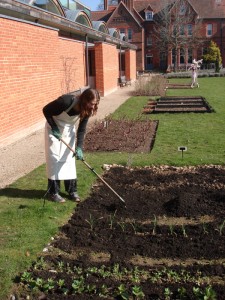
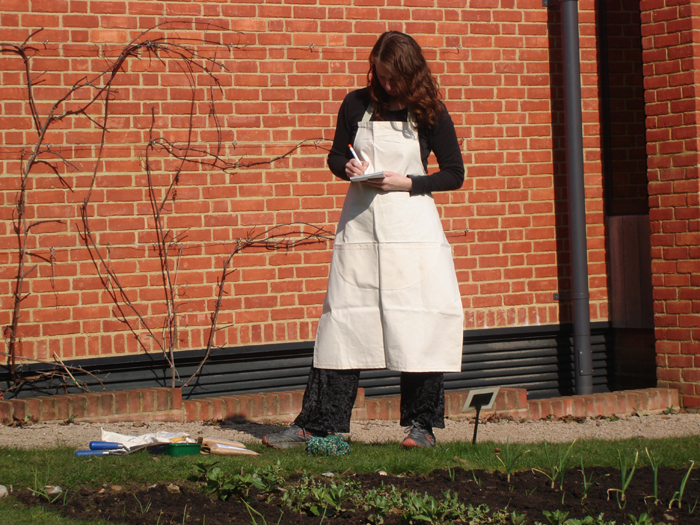
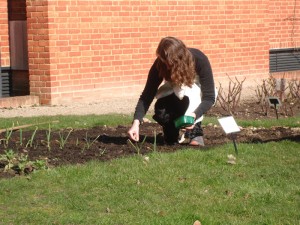
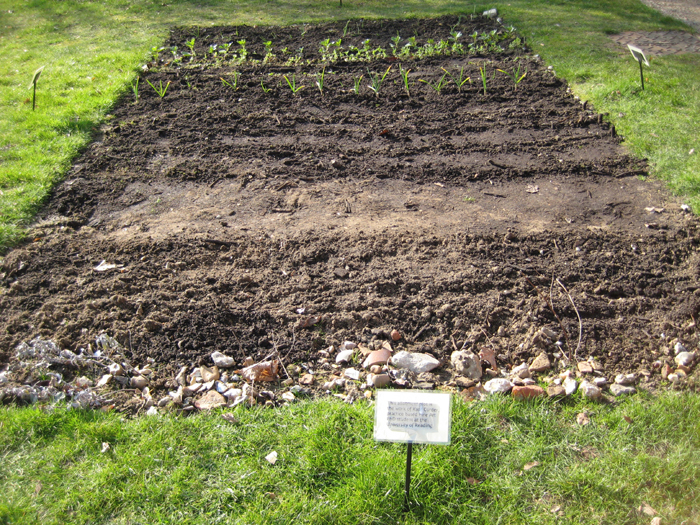
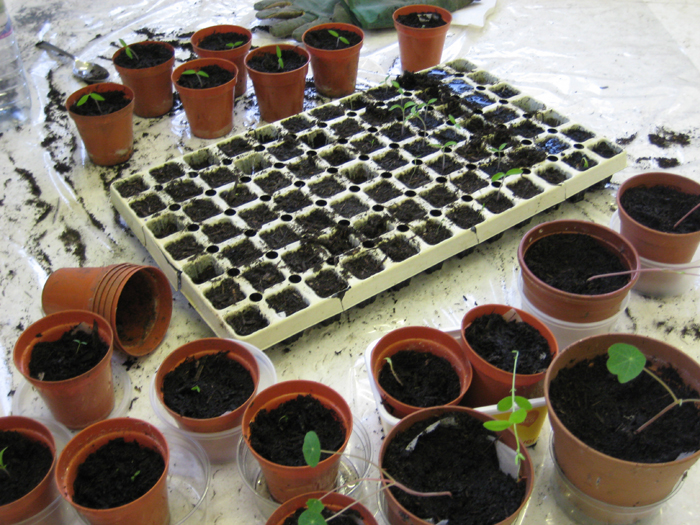
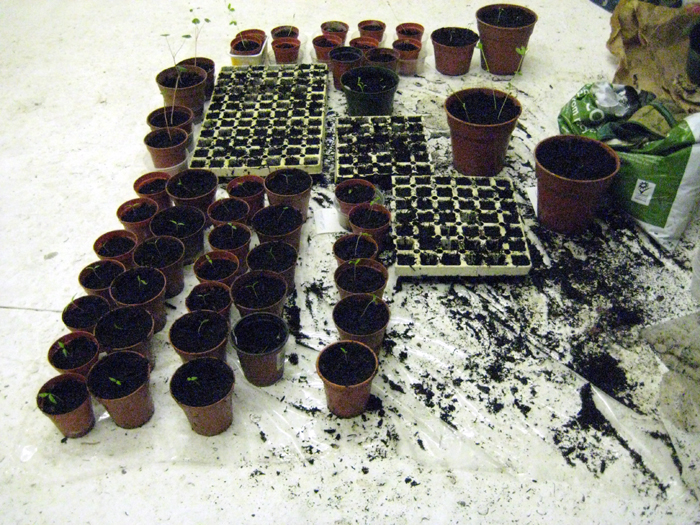
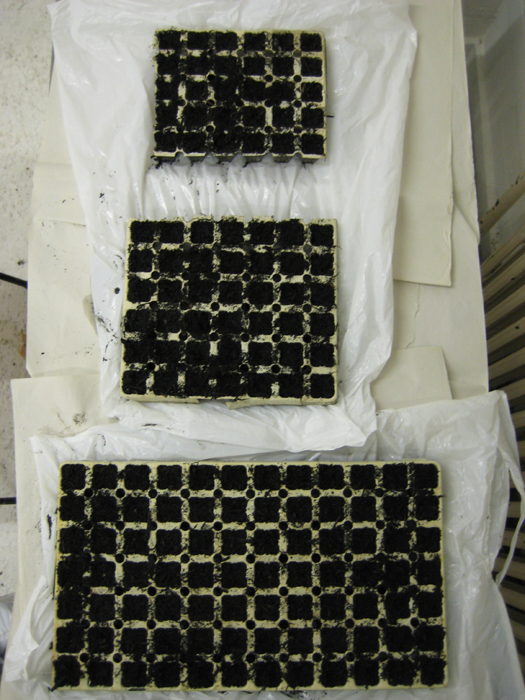
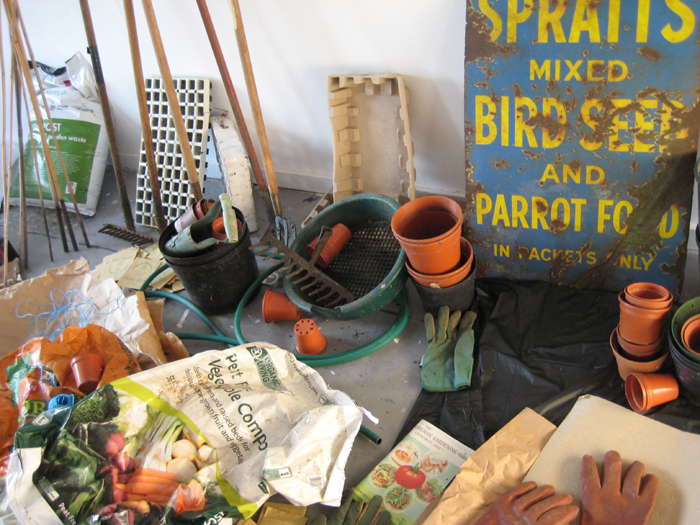
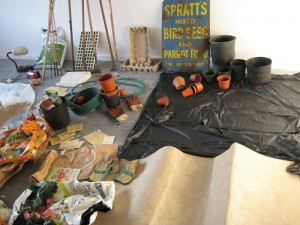
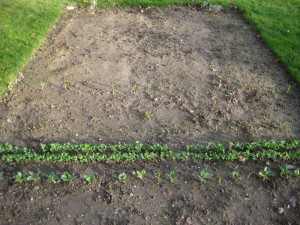
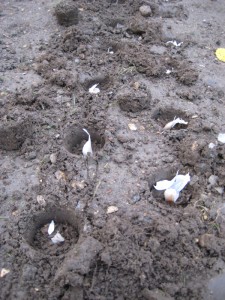 There has been rain over the last few days and some sunshine. The soil at the allotment has softened with the moisture. Today I planted two rows of garlic, each clove approximately 15-20cms apart. I used two types of garlic. The first type was Thermidrome, one bulb that contained 14 cloves and the other type was Sprint, at one and a half bulbs, which was a total of 15 cloves. I covered the vegetable organisms with the soil. The garlic should be ready to harvest next summer.
There has been rain over the last few days and some sunshine. The soil at the allotment has softened with the moisture. Today I planted two rows of garlic, each clove approximately 15-20cms apart. I used two types of garlic. The first type was Thermidrome, one bulb that contained 14 cloves and the other type was Sprint, at one and a half bulbs, which was a total of 15 cloves. I covered the vegetable organisms with the soil. The garlic should be ready to harvest next summer.